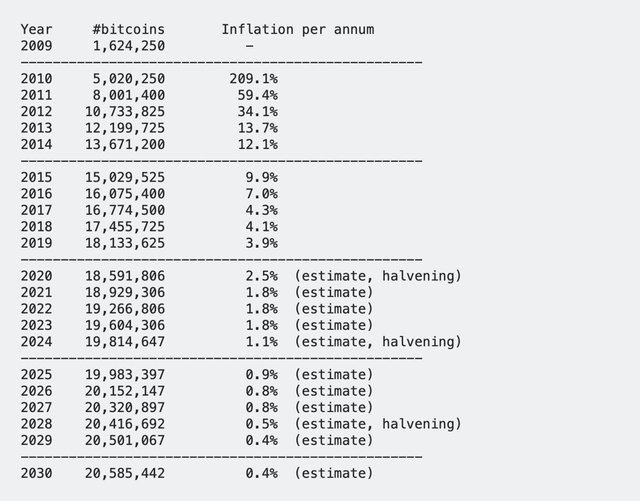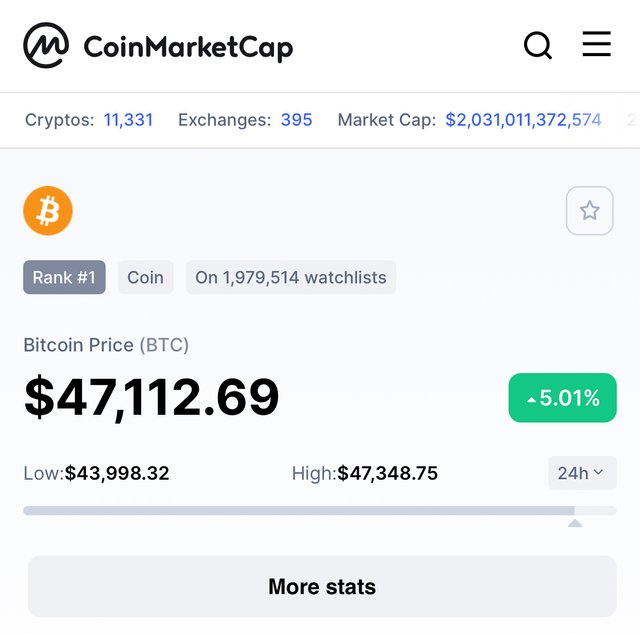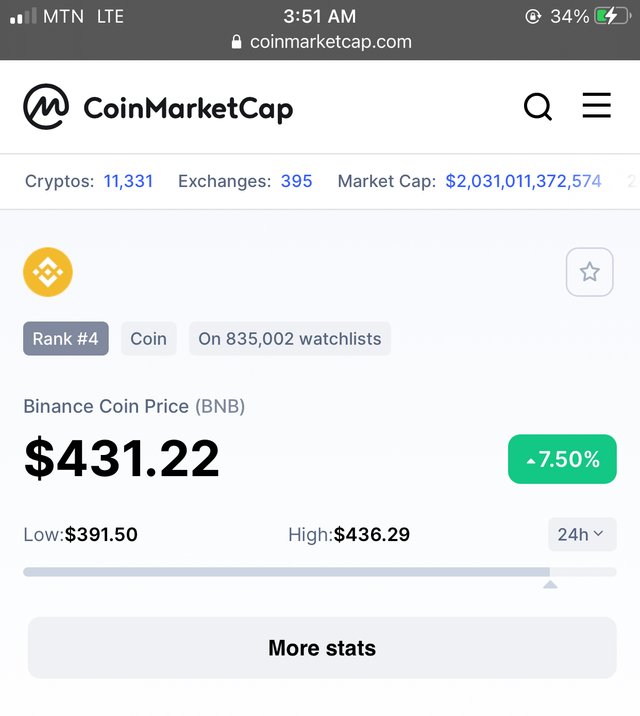
In your own words, explain mining and block reward.
The word mining to me before the lecture has always meant two things which are the extraction of material from the soil and the generation of new coins in the crypto world.
After the lecture and a lot of research done on cryptocurrency mining, I realized they both are not the same with mining not only meaning the production of new coins.
Crypto mining can be defined as an activity carried out by network participants involving proof of work which results in generating new coins as a reward for the miner who successfully did the proof of work first for each new block.
Whereby verified transactions are aggregated into a memory pool where they wait until they are included in a block.
By mining, a participant can receive rewards in a process known as Blockchain Rewards which in my understanding means a reward received by a miner for completing blocks for verified transactions that are included in a blockchain.
These rewards are paid to miners who can solve a complex hashing puzzle first and the probability of a participant being able to know the solution is related to the total mining power of the network.
What do you understand by the Bitcoin Halving?
Bitcoin halving occurs approximately after every four years. After every 210000 blocks have been successfully mined, wherein the successive block reward of the Bitcoin mined is divided by two meaning the reward is in halves. Bitcoin halving reduces the amount of Bitcoin available in circulation.
In 2009 at the time when Bitcoin was introduced, there were 50 Bitcoins to be mined as the rewards for each block. And after the past three halves which have occurred in the year Nov 28, 2012, and July 9, 2016, and May 11, 2020, that moved the reward for blocks mined from 25 to 12.5 and then at 6.25 Bitcoins as of the last halved which occurred on May 11, 2020. With the next approximately to occur in the year 2024 were the rewards per block will be reduced to 3.125 Bitcoin per block mined.
The reduction of the rewards by halving has a great effect on the miners which will be seen below.
What are the effects of the Halving on miners?
Halving has a lot of implications on the crypto world as it reduces the rate at which new coins are generated and it thus reduces the available Bitcoin thereby reducing the inflation rate of the coin.
The bitcoin halving has seen a drastic dropped in its inflation rate as of 2010 which has seen a drastic change from an estimated rate of 209.1% to now stand at a present rate of 1.77% which has added so much value to bitcoin
Bitcoin halving has a great effect on miners as it reduces their rewards and their income for example as of the time the second halving occurred which moved it from 12.5bitcoin the price was $590,940.00 (as of the time of this post) per block rewards to 6.25bitcoin which value is $295,443.75 (as of the time of this post). So it can be seen as the miner's reward was reduced.
Small scale investors are affected positively by halving this is because as halving occurs the amount of bitcoin in circulation is reduced by half and there is an increase in its demands thereby causing an increase in its value.
Due to a decrease in the supply of Bitcoin and a decrease in the inflation rate caused by bitcoin halving, it causes an increase in the demand for bitcoin thereby causing a drastic increase in its price.
What is the current block height on the Bitcoin blockchain? How many more blocks before the next halving? (Screenshots and Full working)
In getting the block height on the Bitcoin Blockchain, will be visiting the
BlockExplorer.one site
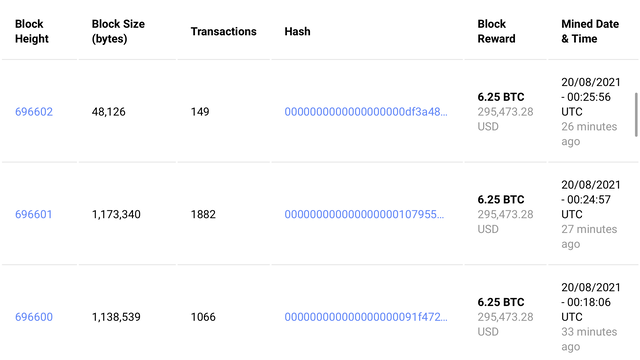
From the screenshot above, we can see that the present block height of the Bitcoin Blockchain is 696602.
Since bitcoin halving occurs at every 210000 blocks and has undergone 3 halves already the next will be the fourth the total blocks to be mined will be
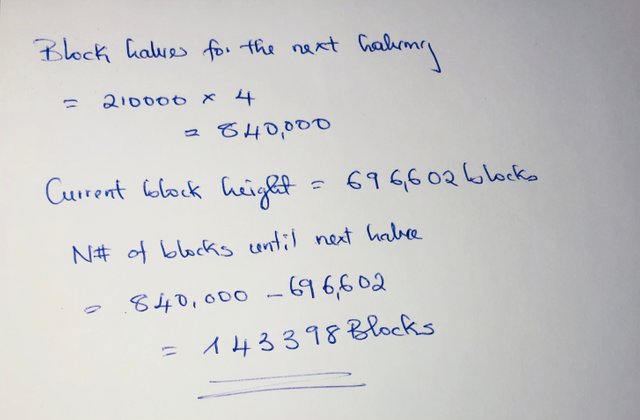
There will be 143,398blocks before the next halving.
Do you think Steem’s inflation rate reduction can affect other coins? Why?
To me, I don't think Steem the inflation rate reduction can affect the other coins of the crypto world this is because STEEM is not a major coin as BITCOIN. The increase and decrease of the Steem are insignificant to other coins as such change can affect only the holders of the STEEM token.
So in my conclusion, the STEEM inflation rate reduction can barely affect other cryptocurrencies as its inflation rate decreases by 0.01% by every 250,000blocks mined.
What is the current block height on the Steem blockchain? How many more blocks before the next 0.01% reduction? (Screenshots and Full working)
In getting the block height on the Steem Blockchain, will be visiting the steemscan.com site
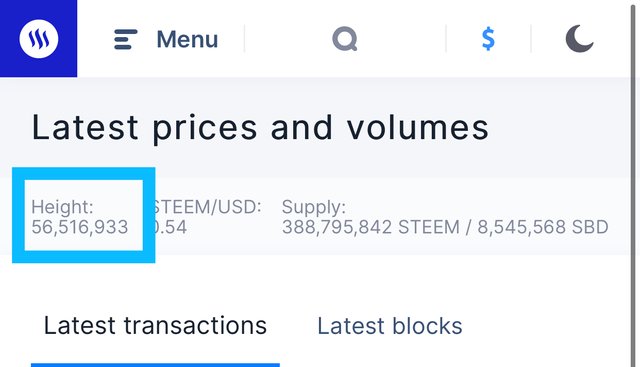
From the above screenshot, the height of the Steem blockchain at the time of this homework is 59,516,933blocks.
The inflation rate of Steem reduces by 0.01% at every 250,000blocks.
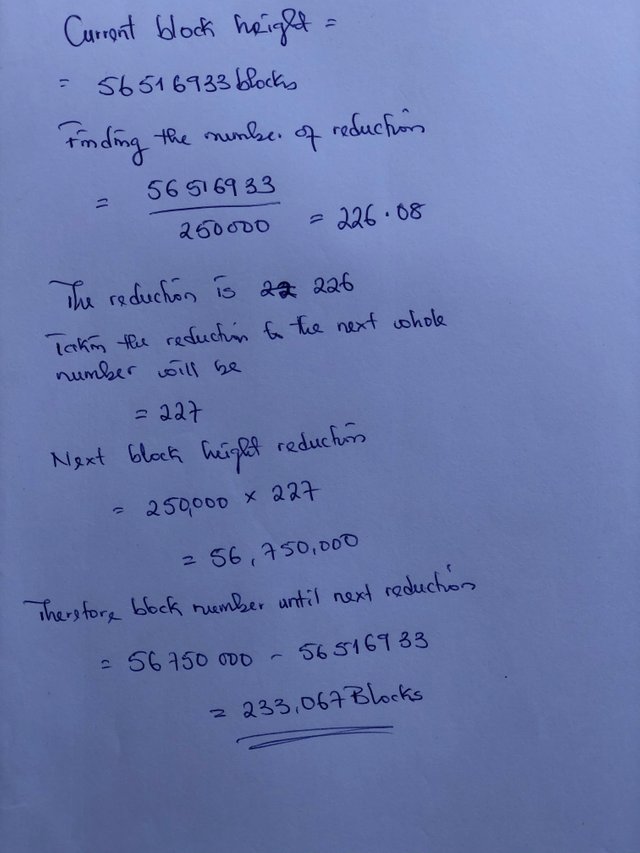
##
What is the current value of BTC on the day you are performing this task? If you purchased $2,500 then,
a.) how many satoshis would you have?
b.) what is the value of a satoshi for that day?
(Show full working and correct to 3 s.f)
(1 satoshi = 0.00000001 BTC)
_I will purchase
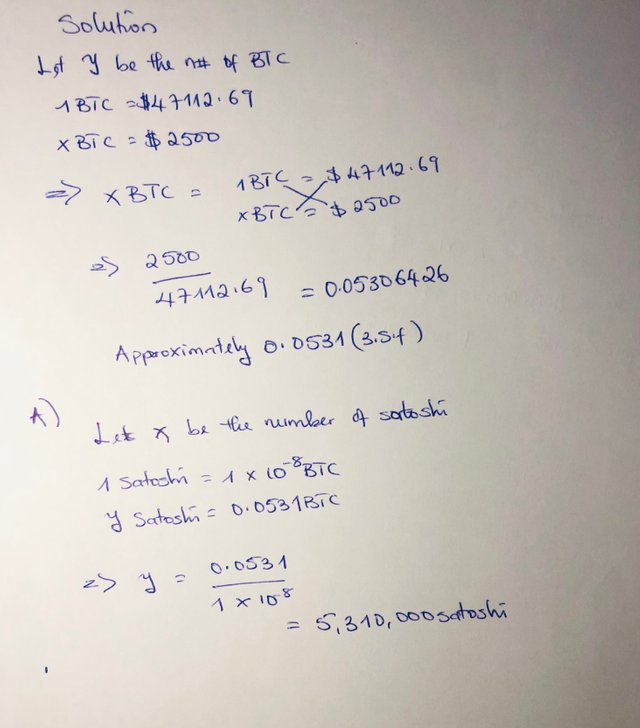
Purchasing BTC worth $2500 will give me 5,310,000Satoshi
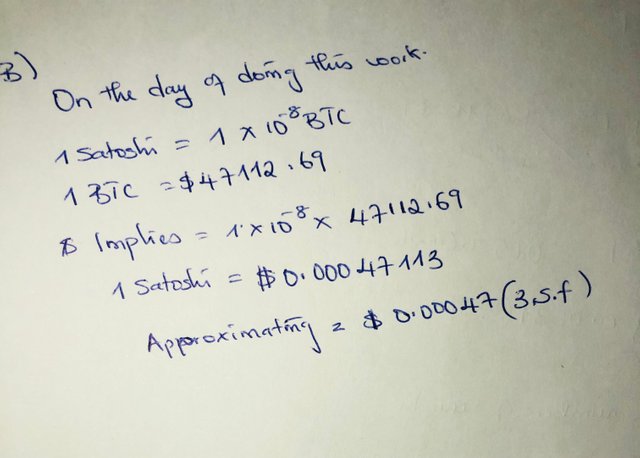
What is the current value of BNB on the day you are performing this task? If you purchased $30 then,
a.) how many Jagers would you have?
b.) what is the value of a Jager for that day?
(Show full working and correct to 3 s.f)
(1 jager = 0.00000001 BNB)
The value of BNB on the day of taking the task is $431.22
And if I purchase $30 will receive,
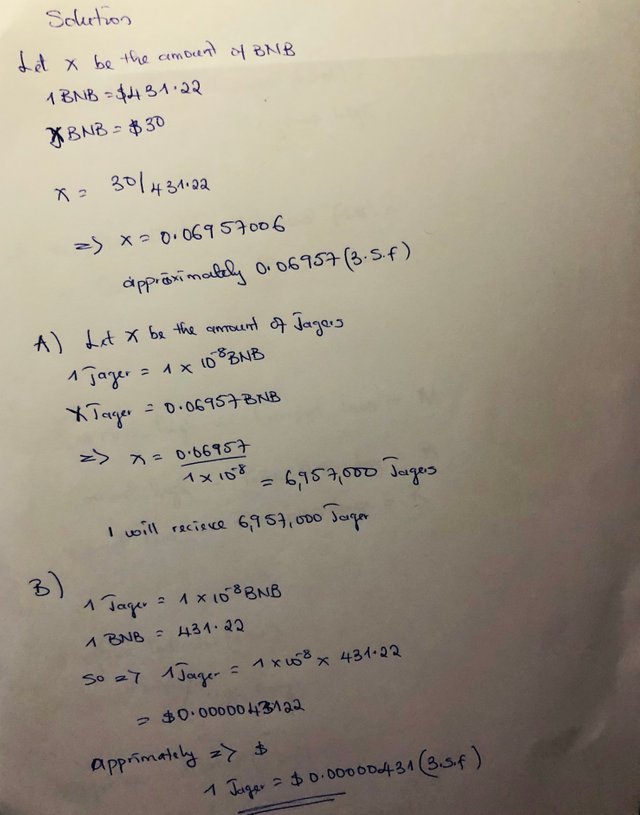
Without much I do I would say the class was must simply and better understood and to the best of my ability, the assignment was well answered. Since it's my first homework I am open to all corrections and support to pull me through. Thanks, prof @awesononso for such a wonderful lecture and homework by @nackasnelson
